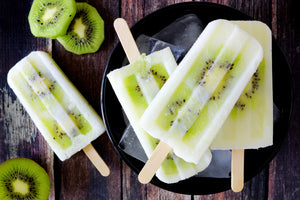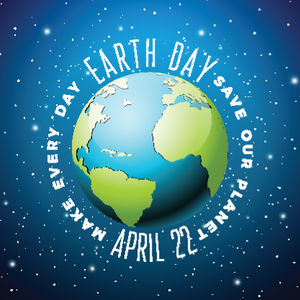NHB's ECO FRIENDLY News Blogs
MAKE IT MONDAYS I TERRIFIC TIPS TUESDAY I WACKY WEDNESDAYS I THRIFTY THURSDAYS I FACT OR FICTION FRIDAYS
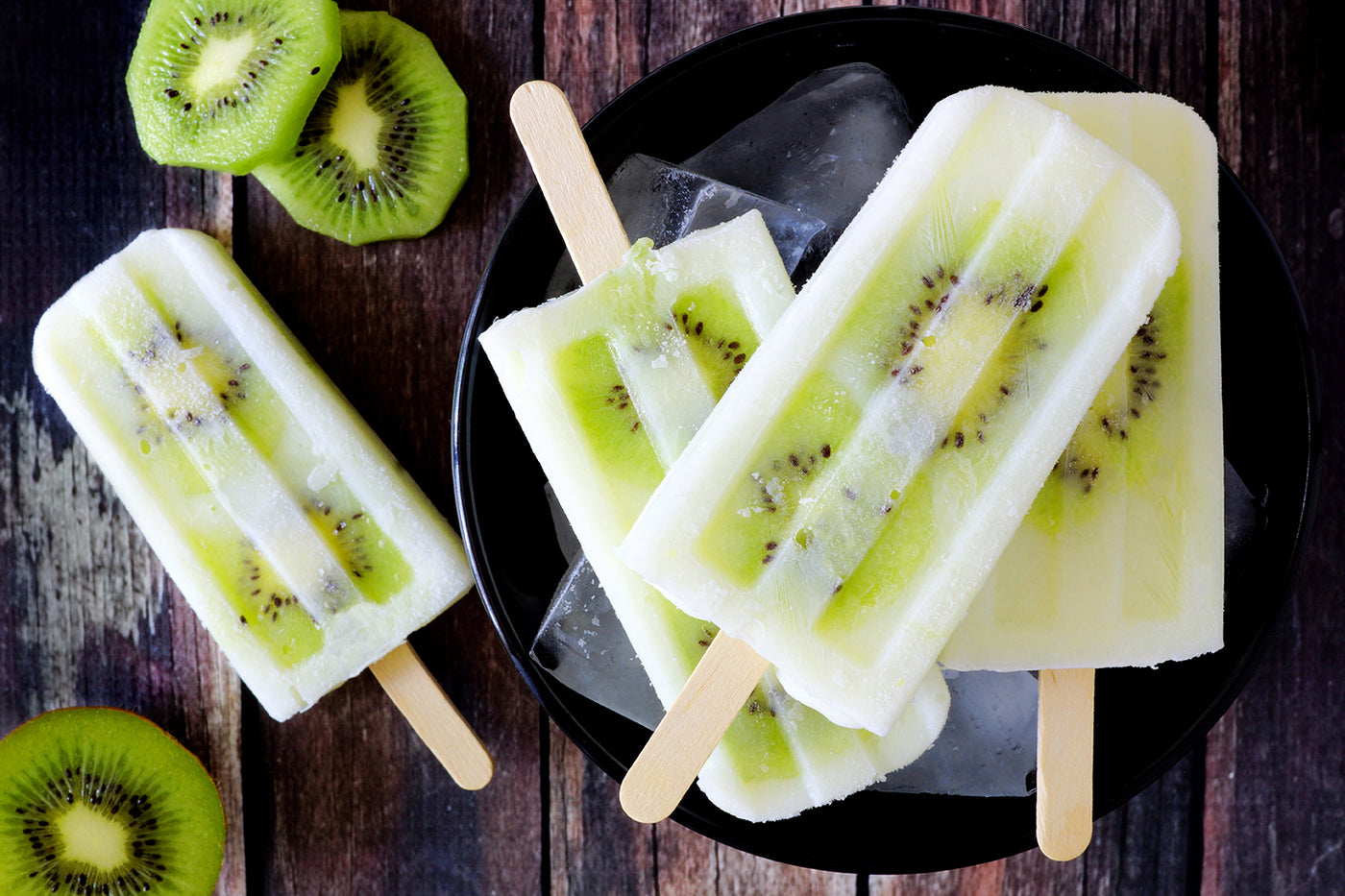
15 (Affordable) Ways To Keep Cool This Summer
15 Affordable Ways To Stay Cool This Summer
Some savvy tricks to keep the heat away and at bay!
Air conditioning is AHHH soo nice, but let’s face it, blasting it all day everyday (and sometimes night) isn’t cost or energy efficient. Not to mention, many people have homes where air conditioning isn't even an option!
We’ve got a few ideas below to help beat the heat wave and keep your temperature down without sending your energy bill up!
- Gabriella De Luca
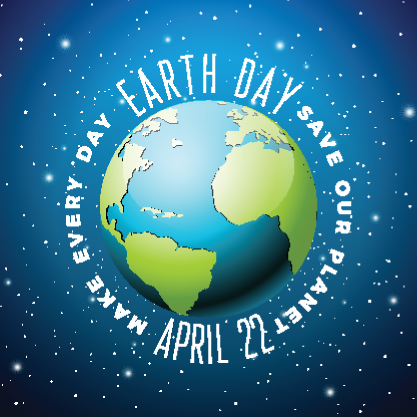
30 Ways to Celebrate Earth Day
30 Ways to Celebrate Earth Day
Recycle – your small habits add up to something much bigger. Imagine if everyone thought their contributions didn’t matter – we’d be stuck with a WHOLE LOT more pollution. Know what you can and cannot recycle - we can help - READ THIS
BYOB – This stands for Bring your Own Bag AND Bring Your Own Bottle. Skip the plastic bags for vegetables and groceries, and invest in a few water bottles and reusable coffee cups for your on the go adventures
- Gabriella De Luca
Benefits Of Soy Wax Candles
Why Our Soy Wax Candles Are Awesome!
Soy wax candles are amazing for a variety of reasons:
-
Made from a vegetable wax of soybean oil, its melting point is much lower, which leads to a longer lasting candle burn –about 30-40% longer burn time compared to paraffin wax candles
-
The majority of candles are made with paraffin wax, which is derived from petroleum, in other words, it is a refined gasoline product. These are known to burn toxins - benzene and toluene when burned; known carcinogens – kinda not something you want to breathe or burn since these are also a few of the same fumes found in diesel fuel fumes.
-
Soy wax is derived from vegetables, and is a natural and renewable resource.
-
Our soy wax candles do not leach funky chemicals, and are soot – free! No more black flames!
-
Made in a reusable tin! The wax is biodegradable and can be cleaned up super easy with soap and water.
Use the freezer method if there’s only a small amount left – wax shrinks when it freezes!
Use boiling water – pour into tin and eventually the wax will begin to melt and float to the top
-
Use warm water + soap – as we said, this is biodegradable and won’t harm the environment
-
Comes in 4 natural scents: Green Tea + Lemongrass (light and fresh), Caribbean Teakwood (musky and tropical), Grapefruit + Mangosteen (Fruity and fun), Himalayan Bamboo (fresh forest)
-
Made in the USA
Other Articles You Might Enjoy:
Items To Remove From Your Home - Declutter!
Plants That Help Purify & Clean the Air
Why Choose Bamboo
Sources Used:
https://nepis.epa.gov/Adobe/PDF/P1009BZL.pdf
https://www.wikihow.com/Get-Wax-Out-of-a-Jar-Candle
- Gabriella De Luca
Items to Remove From Your Home - Declutter!
Items to remove from your home
(for a less cluttered life)

Get a Jump Start On Spring Cleaning!
We always say we are going to Spring clean, but when reality sets it, we don’t have time, too busy, too attached, too set in our ways! We can help with that. We’ve gathered a few ideas for things that should be a no brainer to toss or donate when going through your de-cluttering and Spring cleaning routine.
Less can easily be more! More space, more breathing room, more thinking space, less clutter, junk, and items that are just collecting dust! Go thru our ten questions (or see image on the bottom of this page) when decluttering, and keep in mind of how much you throw away! Are these items you NEED to buy, can you reduce your waste and carbon footprint and simply do without? Questions to think about along the way…
Here goes the list!
-
Expired cosmetics, lotions, nail polishes – I’m talking about stuff you’ve had for years that you can’t seem to part from
-
Clothes that no longer fit – if it’s a weight goal to fit into something that used to fit two years ago – DONATE IT! Start your weight loss or weight gain journey from scratch while not comparing yourself to how you looked when you were 25! #bodypositivity all the way
-
Towels with holes in them – cut these down into smaller towels for handy cleaning; if your small towels have holes in it, drop off at a clothes recycling center or box so they can be made into new textiles
-
Expired receipts – from junk drawers, your purse or messenger bag, your cork board – opt in for a paperless receipt next time. Scan purchases that are important to you, like that new mattress, or washing machine.
-
Mismatched jewelry – why are you keeping this? If its partner is long gone, toss it, or upcycle it. There are fun crafts you can do with statement pieces – like making a hair pin!
-
Tupperware without the lids – recycle these and opt in for molded bamboo, stainless steel, or glassware next time. You can also regrow food scraps like green onions, and garlic in these as well, but since it’s plastic, it’s most likely a good idea to recycle them instead.
-
Junk mail – Expired coupons from two months ago – RECYCLE! Leave a note inside your mail box that says you don’t want junk mail, you will notice this will help reduce the amount you get!
-
Old textbooks – Might need a refresher one day? Or how about 10 years down the line? Most likely the information is outdated, OR a student could use your textbook collecting dust. Donate to a bookstore, help a student out!
-
Old invitations or save the dates – If it’s a cute picture, I get it, maybe keep your favorite’s in the same box you keep special notes and cards. If it’s your old roomie you haven’t talked to in a few years, recycle it!
-
Extra linens – Table clothes, sheets, towels; decipher on what you ACTUALLY use and take it from there. Sheets for the summer, sheets for the winter, enough towels for a week, and a few tablecloths. Free up closet space and make someone’s day by making a donation so they can spruce up their own home with these necessities!
-
Take out Menus – There are online now people! Save a tree, don’t take a menu.
-
Old shoes – Don’t fit, got holes in them? There are places that take donations, even shoes with holes in them, they re-sole them and provide shoes for children and families in other countries.
-
Mismatched socks – Who knows where these really go…if it’s taking up space, utilize these as a dusting cloth or cleaning cloth, or donate so it can be recycled into new textiles.
-
Extra Furniture – it’s taking up space, donate it, or give to a friend or family member. If you possibly want it back one day, let your friend or family member know ;)
-
Broken electronics – recycle these at your next e-waste drive or find a place in your city to drop off. Go on the same day you drop off your other donations so you have a productive donation day.
-
Broken kitchen utensils & gadgets – If it’s not serving its purpose any more, recycle it, upcycle it or toss.
-
Craft Supplies You No Longer Craft with – Free up space and get rid of whatever you no longer use. Maybe it’s beads, yarn, buttons; if you haven’t used it in the last year or two, donate it.
-
Old files and records - Scan your paper files and upload into organized folders on your computer. Records for recent insurance claims and payments are recommended to be kept up to 5 years, 7 years if related to tax returns. “Keep records for 3 years from the date you filed your original return or 2 years from the date you paid the tax, whichever is later, if you file a claim for credit or refund after you file your return. Keep records for 7 years if you file a claim for a loss from worthless securities or bad debt deduction –irs.gov” Again, it’s pretty handy to scan these documents so you don’t accumulate so much paper – if you don’t have a scanner, comb thru all documents and see what still pertains to you and what is necessary to keep.
-
Socks and underwear with holes in them – drop these off at a textile recycling center.
-
Extra dishware – If you’re a family of two and have enough to feed a family of 5 off, for two weeks without doing dishes, you probably have too many. See if a friend needs these, or donate. You’ll free up cabinet space.
Creating “piles”
Once you’ve gone thru our two lists, you’ll probably have a few piles on hand: donate, keep, and toss. To help re-evaluate what’s in each of these piles, refer to the 10 questions to help you de-clutter. If you really don’t need it, but hope to fix it up someday, or use it for a craft, be real with yourself. 90% of the time, it will be more useful or helpful in another person’s hands.

Related Articles:
10 Questions to Help You Declutter
Why Donating & Buying Used is the Way to Go
Importance of the Three R's
- Gabriella De Luca
How to Separate Your Recyclables & Why It’s Important
How to Separate Your Recyclables & Why It’s Important

Recycle – to treat or process (used or waste materials) so as to make suitable for reuse: recycling paper to save trees – dictionary.com
Recycling isn’t a new thing, it’s been around for decades – so why only 34% of all waste being created is recycled? Is it because people are uneducated on the topic? Don’t have time to recycle? Regardless of the reason, recycling is not difficult, and can offer substantial benefits to the environment, as well as the home owner or renter.
We used to ship our plastics over to China, but let’s face it – they got fed up with how unorganized, and dirty it was, and it wasn’t worth their time or the dollar. Now recycling facilities here in the US are swamped with the overwhelming amounts of recycling items they are getting. It would be a smart choice to limit how much you use and consume, but understand waste can’t be avoided altogether.
“China’s ban covers imports of 24 kinds of solid waste, including unsorted paper and the low-grade polyethylene terephthalate used in plastic bottles, as part of a broad cleanup effort and a campaign against “yang laji,” or “foreign garbage.” It also sets new limits on the levels of impurities in other recyclables. Chinese officials also complained that much of the recyclable material the country received from overseas had not been properly cleaned or was mixed with non-recyclable materials. ” (https://www.nytimes.com/2018/01/11/world/china-recyclables-ban.html)
Here are some tips to make recycling more beneficial, and easier for recycling facilities to actually send off to the correct places to RECYCLE the waste!
-
Recycling standards and laws vary from city to city, and county to county. Check up on your city/county recycling laws and make sure you abide by it.
-
Rinse your recyclables. This is an important step. Tainted recyclables can “infect” the rest of what’s in your recycling bin, making it difficult to recycle, and it typically just ends up in landfill if it’s dirty. Rinse glass, plastic containers, aluminum and tin cans – yes, foil can be recycled too – wipe any debris off beforehand. Look to this article here to see what plastics you can actually recycle - Recycling Number on the Bottom of Plastics. Typically, don’t recycle unmarked plastics.
-
Separation time! It’s great to have separate storage bins or containers for these. Plastic, glass, aluminum, tin, aerosol cans, and foil all need to be separated.
Lightbulbs, drinkware, crystal, window and mirror glass, ceramic, and kitchen cookware do not get recycled.
PAPER & CARDBOARD
-
Newspapers are a pretty awesome thing to recycle, recycling a 4 foot stack saves the equivalent of one 40 ft fir tree. This should definitely be saved in its own bin because newspaper material goes directly back into newsprint recycling.
-
Junk mail, glossy papers, magazines, those pesky pizza hang tags on your door or car window, envelopes, computer paper, and paper packaging can all go into one bin. Staples are acceptable but any plastic wrap or rubber bands should be removed. Cardboard, stickers, laminated papers or laminated cardboard, or carbon paper (like receipts) should not be included in your paper bin.
-
Corrugated Cardboard is highly valued. A lot of curbside collectors encourage to bale them together and tie with a string. Keep it dry, please keep it dry, wet or greasy cardboard can clog sorting machines.
-
Your plastic lined drink cartons, like your milk carton, your favorite juice carton, etc., are pretty much accepted, make sure to ask with your local recycling center.
-
Food wrappers made of plastic, dirty tissues and napkins CANNOT be recycled. Reduce food wrappers, as these go into landfill, and COMPOST your tissues and napkins.
Recycled cardboard makes cereal boxes, paperboard, paper towels, tissues, printing and writing paper, and more cardboard boxes.
PLASTICS
Every piece of plastic ever made, is still here, it does NOT break down in landfill, which is why it’s crucial it’s recycled, and never littered. It can be recycled into so many different products. Please also note that recycling plastic varies by your local recycling center. Call them to check out what they accept.
-
Almost all recycling centers take plastics #1(PET) & #2(HDPE). Typically plastic #4, and plastic #7 is not recyclable, however some plastic #7 is actually compostable; this will usually be stated on the actual packaging or container.
-
Plastic bottles are usually made with #1 and is a high valued recyclable. Tops should be removed before recycling.
-
Plastic grocery store bags and this is not typically picked up curbside. The majority of major grocery stores have a bin out front where you can recycle your plastic bags. Always opt in to bringing your own, so you don’t contribute to the growing plastic bag problem. If you must use a plastic bag, recycle it.
-
Plastic #6 (polystyrene) does not break down either. This includes food trays, like microwavable meals, plastic egg cartons, cups, etc. A few recycling centers do take this material, but again, just give em’ a call and double check. It’s best to try to reduce this material as much as possible.
GLASS
-
Paper labels can be left on the glass
-
Remember to rinse, and in some counties, dry as well!
-
Clear, green, and brown glass can all be recycled – typically recycling centers like if you separate them/
-
Things like lightbulbs, mirrors, ceramics, sheet glass, etc. should not be recycled in this container.
ALUMINUM, STEEL & COPPER
-
Copper is 100% recyclable, as well as bronze and brass.
-
Food cans should be rinsed and the label removed.
-
Aluminum cans can be recycled indefinitely, so it’s also one of those highly valued recyclables. A recycled can, can appear as a brand new can within of month of the recycling process.
-
Aluminum foil and foil packaging can be recycled, which is a common misunderstanding. Make sure it’s free of food debris. This material can be re-processed into aluminum mechanical components, like engine parts.
-
Paint cans, aerosol cans are recyclable. These need to be separated from other metals, and keep all labels on since these are known as a hazardous waste.
Americans, on average, drink one beverage from an aluminum can each day, but we only recycle just over 49% of the cans we use. 2.7 million tons of aluminum is discarded each year, and of that, only 50% is recycled.
ELECTRONICS
-
Recycle or donate printers, computers, cellphones, hardware, and batteries. Often times, there are local E-Waste recycling drives at schools, libraries, churches, etc.
-
Get out and about in your neighborhood to see if an E-Waste drive is common in your community. If not, call your city to see where you can donate these items.
Related Posts:
Things You Can & Cannot Recycle - An information Guide
Recycle Numbers On The Bottom of Plastics
Recycling Basics
Pollution From Plastics & How You Can Help
Sources used:
http://eartheasy.com/live_recycling.htm
https://eco-friendly.wonderhowto.com/how-to/separate-your-recycling-279295/
- Accounting Manager
How to Grow Veggies in Containers
How to Grow Veggies in Containers
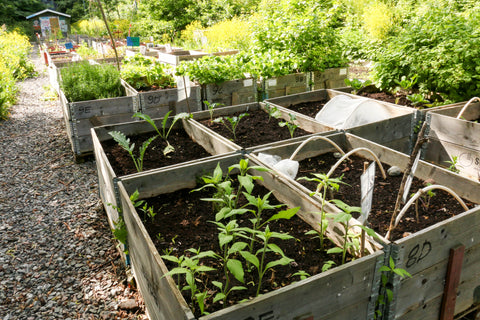
If you don’t have a lot of land, or live in an apartment – you can still grow veggies and herbs! It’s time for container planting! You can even grow full size veggies if your planter is big enough and you have plenty of soil and water. Some vegetables that take up less space are carrots, lettuce, fruit trees, peppers, tomatoes and radishes.
Make sure you start out your new vegetable plant buddies with enough space for them to grow into, and be mindful of the soil and planting site.
Let’s get started!
Selecting containers – you can purchase new planting pots, upcycle pails, baskets, wine boxes, large food cans, etc.
Sun – The majority of vegetables grown in containers do the best in full sun or at least 6 hours of direct sun a day.
Drainage – whatever the type of container you use, make sure it has holes in the bottom so it can drain excess water properly. You don’t want to drown your plants or have them sit in soggy soil. It’s also a great idea to elevate your pots or set them up on something so they don’t get plugged up against a flat surface.
Dark Colored Pots – Sometimes dark colored containers can absorb more heat and this could possibly be damaging to vegetable roots.
Size does matter – For vegetables like eggplants and tomatoes, you should use a five-gallon container for each plant. They can grow in two gallon containers, however, they will need more attention and water.
Soil & Fertilizer- We recommend using potting mixes vs. average soil. There are also peat-based mixes that contain peat and vermiculite which are pH adjusted already. This will help the plants get enough air and water.
Watering – pots and containers will always require more watering vs. plants that are in the ground. As your new friends grow, their roots will expand, requiring even more water. Make sure to check your containers daily to judge how much water your plants will need. Terra-cotta pots traditionally need more water as well since they are very porous.
Wind- Place your vegetables in an area that gets a breeze so it can get proper circulation. Too much wind can topple plants and containers over, especially fruit bearing plants. Tomatoes, peppers, and other plants can easily get diseases so it’s best to put these in an open spot with good air circulation.
Some easy veggies to get started with:
-
Tomatoes
-
Potatoes
-
Carrots
-
Radishes
-
Eggplant
-
Cucumber
-
Peas
-
Zucchini
Other Articles You Might Enjoy:
Tips for Growing Organic
Why You Should Wash Your Fruits & Veggies
10 Foods You Can Regrow from Scraps
Sources Used –
https://www.thespruce.com/container-vegetable-gardening-1403396
https://www.bhg.com/gardening/vegetable/vegetables/growing-vegetables-in-containers/
- Gabriella De Luca


